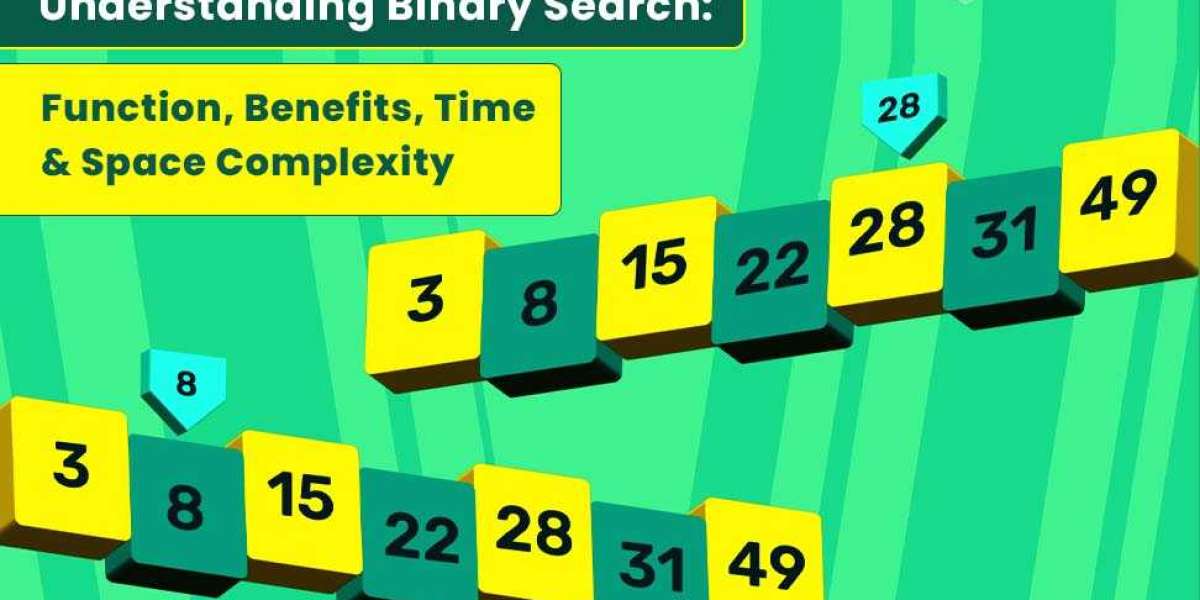Binary Search is a fundamental algorithm in computer science, revered for its efficiency and wide range of applications. It is a divide-and-conquer search algorithm that allows us to find a specific element within a sorted array or list. In this article, we will explore the function and benefits of Binary Search, while also delving into the time and space complexity analysis.
For instance- You’re given a task with two objects- a special egg that’s not easily breakable and a 100-story building, and your goal is to find the floor from which you can safely drop the egg with the least amount of time, here’s and optimize approach: Start by going to the 50th floor of the building and drop the egg from there. If it breaks, you’ve narrowed down the range, and you can then go to the 25th floor and repeat the process. If the egg doesn’t break when dropped from the 50th floor, proceed to the 75th floor and drop it from there, and so on. This method allows you to efficiently reduce the number of possible floors where the egg might break by half with each drop. This strategy is known as Binary Search.
Function of Binary Search
Binary Search operates by repeatedly dividing the search interval in half. It compares the target element with the middle element of the array. If the target matches the middle element, the search is successful. If the target is smaller, the search continues in the lower half of the array; if it is larger, the search continues in the upper half. This process is repeated until the target element is found or the search interval becomes empty.
Here’s a step-by-step breakdown of Binary Search:
- Begin with the entire sorted array (Mostly Ascending).
- Compare the target element with the middle element of the array.
- If they match, the search is successful, and the index is returned.
- If the target is smaller, repeat the process with the lower half of the array.
- If the target is larger, repeat the process with the upper half of the array.
- Continue dividing and searching until the target element is found or the search interval is empty.
But What if the array is not sorted? If the array is not sorted we can sort the array in Python using the inbuilt function of Python. The InBuilt Sort Function takes nLogn Time complexity as it uses merge sort to sort the array. So the overall time complexity remains the same.
list.sort(key=…, reverse=…)
Benefits of Binary Search
1. Efficiency
Binary Search is highly efficient, with a time complexity of O(log n), where ‘n’ is the number of elements in the array. This logarithmic time complexity means that even for very large datasets, Binary Search can find the desired element in a reasonable amount of time. This efficiency makes it a preferred choice for searching in large datasets.
2. Guaranteed to work on sorted data
Binary Search works exclusively on sorted data. While this might seem like a limitation, it ensures that the algorithm is reliable and predictable. Maintaining data in a sorted form is a common practice, and Binary Search complements this well.
3. Versatile
Binary Search can be used not only to find an element but also to determine its absence. If the search concludes with an empty interval, it means the target element is not in the array. This ability to verify both the presence and absence of elements is valuable in various applications.
Time Complexity Analysis of a Binary Search Algorithm
As mentioned earlier, Binary Search has a time complexity of O(log n). This logarithmic time complexity is significantly faster than linear search (O(n)), where each element is checked sequentially. The logarithmic behavior ensures that even as the dataset grows, the number of operations required to find an element increases slowly. But if the array is not sorted the time complexity can change from (O(log n)) to (O(nlogn)) because we have sort the collection. Sorting of the array can take (O(nlogn)) time complexity. So the overall Time Complexity of the algorithm will be (O(nlogn)).
Space Complexity Analysis of a Binary Search Algorithm
Binary Search is efficient in terms of space as well. Its space complexity is O(1), indicating that it uses a constant amount of memory regardless of the size of the dataset. It achieves this by manipulating indices rather than creating additional data structures.
In conclusion, Binary Search is a robust algorithm known for its efficiency and reliability in finding elements within sorted datasets. Its benefits include speed, suitability for sorted data, and versatility. The time complexity of O(log n) and space complexity of O(1) make it an essential tool in the toolkit of any programmer or computer scientist. Whether you’re searching for an item in a phone book, a word in a dictionary, or an element in a massive database, Binary Search remains a go-to choice for its unmatched efficiency. In the case of an unsorted array, the space complexity remains the same. It doesn’t matter whether the array is sorted or not.
Python Code for Binary Search
Let’s implement a binary search algorithm in a Python program:-
def binary_search(arr, target): left, right = 0, len(arr) - 1 while left = right: mid = (left + right) // 2 # Calculate the middle index if arr[mid] == target: return mid # Target found, return its index elif arr[mid] target: left = mid + 1 # Adjust the search range to the right half else: right = mid - 1 # Adjust the search range to the left half return -1 # Target not found in the array# Example usage:arr = [1, 3, 5, 7, 9, 11, 13]target = 7result = binary_search(arr, target)if result != -1: print(f"Target {target} found at index {result}")else: print(f"Target {target} not found in the array")Code language: PHP (php)
In the Python code above, we implement Binary Search. It efficiently narrows down the search space, making it ideal for finding elements in large, sorted datasets. The example demonstrates using the binary_search function to find the target element (7) in the given sorted array.
Binary Search’s unparalleled efficiency and reliability make it the top choice for various search tasks. Whether you’re searching for an entry in a phone book, a word in a dictionary, or an item in a vast database, Binary Search is the go-to algorithm.
Real-Life Applications of Binary Search
Some of the real-life applications of the Binary Search
Dictionary Application:- The use of a phone book or dictionary as an example to demonstrate binary search is common. Consider a sizable dictionary that is alphabetically arranged. You now want to know what the word “hypothalamus” means. What approach would you take?
One approach would be to start at the beginning and work your way up word by word until you achieve your objective. The fact that terms in a dictionary are sorted is obviously not being used in this, and if there were a large dictionary with millions of words, it would take forever. It would take me longer than ninety days to examine a million words, even if I could read at a speed of three words per second, which I seriously doubt.
Guessing Game:- We can build an application in javascript that will be a guessing game like guessing a number in a range. The simple approach can take O(n) time complexity. So it’s better to build a guessing game using binary search which takes less time. Our knowledge of whether the secret number is larger or smaller than what we attempted would be used in the binary search method. Therefore, if we were given the choice to choose an estimate from numbers 1 to 1000, we would choose 500, followed by half of the new interval, and so on. This would once more provide the right answer in the fewest steps.
Conclusion
Binary Search is a prime example of effectiveness, dependability, and beauty in the realm of algorithms. It is an essential tool for programmers and computer scientists due to its divide-and-conquer strategy and ability to quickly identify components in sorted datasets. Whether you’re looking for a contact in a phone book, a term in a dictionary, or a specific piece of information in a sizable database, Binary Search is the algorithm of choice thanks to its unrivaled efficiency and dependability. You can be equipped to handle a wide range of duties with accuracy and haste if you comprehend its inner workings and appreciate its advantages. Without question, the foundation of computer science is binary search, which continues to influence how we explore and modify information.







